By Riley Rath
Title image © Hal Jespersen
What type of battles are your D&D combat encounters?
Better question... what kind of battles can you ADD to your 5e campaigns?
This blog post will help us better understand D&D combat encounters by identifying the different types of battles, ie. "combat engagements," in the medieval world.
My hope is simple:
1. That this knowledge will inspire new combat encounter ideas for Dungeon Masters.
2. That this knowledge will inspire other types of nerds... military nerds... to explore the other blogs on this site and maybe give D&D 5e a try!
Table of Contents
- What is a D&D Combat Encounter?
- Why Will Knowing Medieval Battles Spark DnD Combat Encounter Ideas?
- Types of Warfare to Inspire Combat Encounter Ideas
- The Brawl
- The Duel
- The Skirmish
- The Ambush
- The Boss Fight
- The Raid
- The Siege
- The Pitched Battle
- The Meeting Engagement
- The Naval Battle
- Conclusion: How to Use This Blog Post?
What Are Dungeon and Dragons Combat Encounters?
A D&D combat encounter happens when the players use martial and magical violence ("fireball") to overcome a threat and challenge. It usually begins with the rolling of initiative, followed by players and the Dungeon Master alternating turns in order.
The combat encounter is resolved once the Dungeon Master determines that the desire or required outcomes have been met.
One important thing: a common misconception is that when campaign modules or rules speak of "encounters," they must be speaking of "combat encounters." That is not the case. At the risk of oversimplifying, an encounter is just a moment in the game where SOMETHING happens.
In this blog post on the exploration pillar, I explain that encounters serve as SCENES for the narrative that everyone at the table is telling together. From a gaming perspective, a combat encounter is a moment when the game's combat mechanics are put into effect.
Knowing all this:
- When players are role-playing and rolling for various skills and they talk to a mysterious NPC... they are in a ROLE-PLAYING encounter.
- When players are making perception checks to solve a trap in a dungeon... they are in an EXPLORATION encounter.
- When players are surrounded by undead and have to fight their way into the tower... they are in a COMBAT encounter.
So, clearly, combat is just one type of encounter that comprises the game of Dungeons and Dragons and helps tell the adventure story. All the types of battles mentioned in this post can be 5e combat encounters.
Everyone on the same page?
Great :)
Let's talk about battles!
Why Will Knowing About Medieval Battles Spark DnD Combat Ideas?
Great question!
After all, it's not like using military nomenclature is necessary to play Dungeons and Dragons. What makes TTRPGs so cool is that you get to PRETEND to be something without actually being that thing.
Though, admittedly, even this pretending runs into problems, like when a highly intelligent player is playing a big, dumb barbarian and can't reeeeally role-play AND solve the puzzle, but I digress...
Another objection: why add MORE suggestions?
We already have the Player's Handbook (189 – 198) and the Dungeon Master's Guide (247 – 252) detailing the various rules necessary for running combat encounters. Not to mention the overwhelming wealth of wisdom handed down through generations of players.
And after nearly 50 years of D&D, we, as the D&D community, have a TRADITION that guides our understanding of combat encounters; generally speaking, there is a combat encounter "liturgy" that we all tend to follow.
So why should a player or a Dungeon Master spend any of their precious free time learning about different battles? Why read this blog post?
Because combat encounters are STILL repetitive and boring.
Be honest with yourself... how many combat encounters have you played or led as a DM where it was basically just a pitched battle between a monster and a party?
- Flat, open space...
- No weather...
- The time and place determined by the players...
- Everyone rested and prepared...
- The only goal is to "kill bad guy"...
Don't get me wrong, this type of combat encounter can be FUN and, as you will see, has its place in every campaign.
But that said... I think we could all admit that way, WAY too many of our combat encounters end up this way. And anything, no matter how exciting, becomes boring if you do it over and over and over again.
Knowing different types of battles will spark new 5e combat encounters.
There are plenty of suggestions on how to make combat encounters more engaging and fun for our players... in fact, I'll offer two here and there... but THIS blog post takes a different route.
Rather than offering mechanics, random tables, or encounter design advice... this will offer types of battles as CATEGORIES of combat encounters. These are places you can START from when you set up an epic clash for your players.
And once you begin starting your encounter design from different places, you will notice that your encounters will look more and more different... be more and more interesting... and more and more fun for your players!
We'll start with small types of "battles" and get bigger and bigger from there.
Types of Warfare to Inspire Combat Encounter Ideas

© Paizo
The Brawl
When it comes to types of battles, this is the simplest and most disorganized version.
Brawls are often spontaneous... started by soldiers, bikers, or frat guys (to name a few) over a perceived insult. While they can be deadly, more often than not, they are just about beating someone up. They usually take place in areas where many emotional and/or intoxicated men congregate... like stadiums, taverns, or military encampments.
What distinguishes a brawl from every other from of D&D combat is that the intent is to NOT kill your opponent. Usually, if you kill someone in a brawl you are MINIMUM being charged with manslaughter and doing some prison time. But in a city? You are just as likely to be facing execution or banishment.
Since most parties are full of murder hobos, most tables avoid brawls. However, D&D has several rules that are relevant to any DM wishing to offer a brawl combat encounter to their party.
Unarmed fighting rules dictate that you can hit an enemy with any part of your body, and the damage is 1+ your Strength modifier. A lot of brawls are really just rough wrestling, so knowing your grapple rules is important (hint: you do NOT make an attack roll). And the Tavern Brawler Feat will give players a significant advantage in any of these types of battles.

The Duel: The "Small Scale" Battle
Brawls may be the simplest fight... but they are not the smallest among the types of battles! That belongs to the duel, which is a combat encounter between just two individuals... one on one.
Duels are fought for different reasons. More often than not, it is a question of honor: one defends their reputation against the dishonorable accusation of another. But they can also serve as "single combat." This would be like David vs Goliath: a leader of one army asks that each side send over a representative... whichever individual loses, the other army capitulates.
They also involve different levels of lethality:
- The gentry of the 18th century England and America often dueled with pistols, with Alexander Hamilton firing into the air being a great example of wishing no harm to the other (France and Russia used swords).
- Some duels were about getting the opponent to yield by disarming them or placing them in an uncompromising position, like Bruce Wayne and Ra's al-Ghul duel over the ice in Batman Begins.
- But other duels are TO THE DEATH... the duel does not end until one or both combatants are slain. The greatest pop culture example of "to the DEATH" duels would be the Mountain vs the Viper in Game of Thrones season 4 (Book: A Storm of Swords).
Now... given that Dungeons and Dragons is not a single-person game... I would usually advise against having one player duel an enemy NPC for 40 minutes while the rest of the table twiddles their thumbs.
HOWEVER... you could arrange a combat encounter to be several individual duels where each player has to defeat the enemy NPC without any help from their allies. You could choose to have every player fight martially, or you could match them up with complementary warriors or spellcasters. And they could fight until they reduce the hit points to, say, 25% of the total, rather than to the death.
Speaking of "spellcaster duels"... if you are interested in wizard duels, go read our blog post on Counterspell... it offers a MUST read!
Even if a player were to win their duel with ease, they would have to watch helplessly as their allies struggle. This would add an additional emotional level to combat and force players to act outside of their normal combat encounter habits.
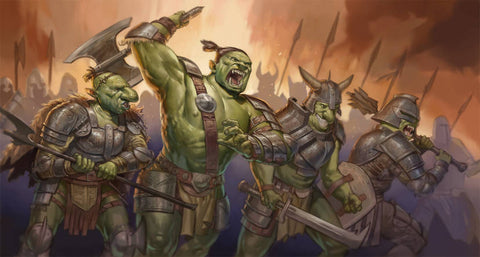
© Benjie-Art
The Skirmish: The Most Common DnD Combat Encounter
What is a skirmish?
Picture a typical D&D 5e combat encounter with some bandits or mercenaries.
You got it.
Don't change your initial image in any way.
The vast majority of your D&D 5e combat encounters will fall under the vague definition of a skirmish.
Why?
Because in the real world, the skirmish is the most vague and ill-defined style of combat. Wikipedia defines a skirmish as "an engagement with only limited commitment between the forces and without decisive results."
Simply put... a skirmish is an instance where a small-ish number of opposing forces fight one another. In the context of war, skirmishes often occur when scout parties intersect each other or units run into each other while searching for supplies.
Regardless, skirmishes are not "decisive"... the outcome of the skirmish does not solve anything or force the leaders to act in any way. Similarly, a skirmish in your campaigns would not shape the destiny of the kingdoms or shake the foundations of the Material Plane.
However... the consequences of a skirmish can completely change the course of a session or adventure! The players may discover a new clue, or be altered from their predetermined path... or most significantly of all... experience a character death!
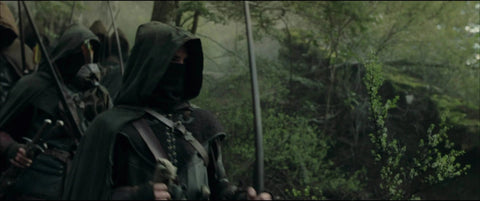
© Embracer Group
The Ambush: A Planned Surprise Attack
If the skirmish is a vague and general form of battle, the ambush is the opposite: it is VERY specific. In an ambush, one group does not know their enemy is present... the other group is waiting for them...
Skirmishes can happen by accident or break out during negotiations of some kind, but ambushes are one-dimensional: there is planning, hiding, and surprise attacking. They can involve only a handful of individuals or be carried out on a massive scale with large units.
A perfect example is in The Lord of the Rings: The Two Towers, when the Haradrim are marching through Ithilien and Faramir's rangers ambush them:
A) The Haradrim were marching along their predetermined path.
B) The Ithilien Rangers had been following them.
C) The Ithilien Rangers picked an ideal time and location to attack.
D) The Ithilien Rangers made a plan on how to deal maximum damage.
E) The Ithilien Rangers hid and waited for the Haradrim.
F) The Haradrim marched through and were decisively defeated.
In terms of D&D 5e combat mechanics, an ambush combat encounter would mean that one side would have a "surprise round." That means that 1) everyone rolls initiative, 2) those in the "surprise round" go first, skipping those being ambushed, and 3) initiative goes back to the top and resumes as normal.

The Boss Fight
This is the OTHER form of combat that dominates D&D campaigns... another style of combat encounter that players run into over and over again. Something that is an essential part of any classic Dungeons and Dragons campaign...
I am talking, of course... about the "Boss Fight."
Unfortunately, I can think of no historically verified examples of "boss fights"... so we are leaving history and entering the realm of video games.
A boss fight is an intense showdown between the party and a single, powerful enemy. The enemy is so strong that no single player could ever hope to defeat it on their own, and even when working together, the enemy remains a serious threat. This enemy has an intimidating amount of health as well as special moves that, in the game, belong to the boss and only the boss.
The Boss Fight often takes place in an environment that matches the enemy, with that environment often having its own effects. In D&D, this enemy usually is some sort of monster or arcane being, and they're usually in their lair, demiplane, or wizard tower.
"Boss Fights" often have significant narrative purposes. They almost serve as a climax to both the story arcs as well as a final capstone to an entire story. Defeating a boss is a major challenge, giving players a sense of accomplishment and transitioning them into the next part of the journey.
While this is also true for D&D campaigns, most fights against a single monster would fall into the "Boss Fight" category.

Awesome Dice Image
The Raid
Starting with raids, we begin to transition from small engagements to larger ones... and a raid can be both! More often than not, they consist of a small band of warriors raiding a rival tribe or a platoon or company military unit delving into enemy territory.
However, the huge 25,000-Mongol force that devastated Hungary in the 1240's AD was technically a "scouting party"... ie a raid! The duration of raids also varies wildly: they can take place in a few hours or over several YEARS, like the Gallic raid into the Roman Republic in the 2nd century BC.
Ironically, even though raiders are armed to the teeth... most of the time, the purpose of the raid is NOT to just go kill a bunch of the enemy. Neither is the goal to conquer a region and absorb its land and resources. Slaughter and pillaging often happens, but usually the goal is more specific and strategic. The raiders enter an area, accomplish a task, and then promptly leave.
Why would your D&D party have a raid combat encounter? Wikipedia excellently lists plenty of reasons:
- To demoralize, confuse, or exhaust the enemy.
- To ransack, pillage, or plunder.
- To disrupt enemy supplies.
- To destroy key structures or positions.
- To gain revenge for wrongdoing.
- To free slaves or prisoners.
- To capture the enemy for interrogation.
- To kill or capture specific key persons.
- To gather intelligence.
In raids, players will be in combat but have a goal other than just "kill bad guy."
On one hand, a raid makes perfect sense if the campaign is set in a world experiencing some sort of warfare. After all, raids are when you attack BEHIND enemy lines.
On the other hand, raids are exactly what two enemy groups do to one another when they are NOT at war. The Habsburgs and Ottomans are notorious for their raids throughout Hungary, even though they "respected" their peace treaty.
Regardless, every Dungeon Master should use raids in their campaigns because they are, by definition, DYNAMIC and COMPLEX combat encounters. Players have to both fight AND do something else, adding further depth to the combat.
And with the strategic goal comes new and exciting tactics from the players! Characters will have to act much more like commandos instead of knights... hit-and-run guerrillas rather than respectable mages.
And a proper, cinematic, commando raid has a little something for everybody... no more Paladin hogging the spotlight! The Ranger can navigate to the enemy camp, the stealthy Rogue can sneak into the tents, the Barbarian can act as the muscle if anything goes wrong, and a spellcaster can guarantee a hasty getaway!

The Siege: The "Destroy the Fortification" Combat Encounter
Siege are types of battles where one force is not only clearly the defender, but they are also in a fixed, fortified position. In response, the attacker surrounds the defenders position with men and trenches ("circumvallate") so they cannot escape or be reinforced. The attackers then rely on time, diplomacy, or direct assault to conclude the conflict.
D&D Translation: "Some people in a castle... find a way to get them out."
Sieges are very interesting... on the one hand, they can contain FEROCIOUS forms of combat encounters: defenders pouring boiling black pitch on attackers, and attackers digging beneath the walls and BLOWING THEM UP WITH MINES. Not to mention the horror and chaos that will ensue if the city falls and is ransacked.
But on the other hand, they can last YEARS... many, many sieges involve fighters on both sides doing a whole bunch of sitting around, twiddling their thumbs, as they wait for a relieving force/for the defenders to starve and give up.
All that said, it is pretty hard to integrate a siege into a D&D campaign...
But it is very easy to play different PARTS of a siege in a D&D campaign.
In fact, a siege can be an entire story arc! Players can fight in siege towers or race up the city gate with a battering ram. They can fight along the ramparts or sally forth from a citadel to disrupt siege preparations. They can experiment with dangerous alchemy or launch boulders from trebuchets. They can set out as saboteurs or sneak in to spy.
And every combat will feel different thanks to the unique setting that is a siege. Whether they are the siegers or the besieged, role-playing with NPCs will have a very different tone. Characters will have to raise moral, manage their energy, and do their best to avoid eating rats and cats. And if there is no solution, they could have the unique experience of role-playing the negotiations and surrender of a city.

The Pitched Battle (Large Scale Battle)
At last we have arrived... this is what most people imagine when they hear the word "battle."
Pitched battles are always fought by armies... or at the very least, the total strength of an armed force. The two armies agree to fight in a particular area at a particular time. They could agree to fight for any number of reasons; maybe they want a decisive battle to end a war, or maybe they need to defend an area, or maybe they are running low on supplies or money.
Regardless of why they agree, the two armies meet and SLUG... IT... OUT.
Arrows and artillery... cavalry charges... infantry formations... the two sides fight one another, looking for weak spots or opportunities to flank. Such pitched battles end when one side A) retreats/scatters, B) surrenders, or C) is annihilated.
Any D&D player would point out the obvious... D&D is not suited for pitched battles. It is a tabletop role-playing game, not a war game. They may agree to meet an opponent, but a party of 3-6 players is hardly an army... even if they could destroy armies when they reach level 20!
Similar to sieges, you could play a pitched battle in your games by playing several small encounters. But if you really want to incorporate a pitched battle into your campaign, I suggest homebrew rules... try this one or this one.
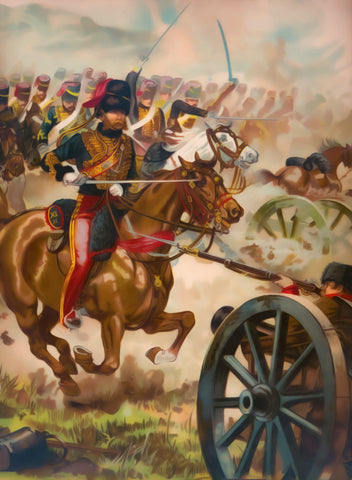
The Meeting Engagement
This battle could have been placed much earlier in the post, as it most commonly occurs when a group of scouts come across a force or some other scouts and combat spontaneously erupts.
However, many massive battles began as meeting engagements. Plus, this type of combat encounter is like a mix of a brawl and a skirmish and a pitched battle all in one messy pile... so it goes near the end!
A meeting engagement is when the enemies just happen to find each other. Doesn't matter if they are searching and expecting the enemy or minding their own business; if they "stumble" upon the enemy, it is a meeting engagement. This creates battles that are confusing and chaotic due to the disorganization and rapidly changing situation on the battlefield.
The D&D equivalent of meeting engagements would be random encounters. These are encounters, many of which turn into combat, that involves the DM rolling and choosing an encounter from a random table. Then the DM explains how the party, for the story's sake, suddenly found this enemy.
Meeting-engagement-type combat encounters force players to think on their feet.
There is no time to set up troops like in a pitched battle or to strategize some attack like in an ambush. There is no grand plan to enact. The enemy is THERE... NOW... you must act IMMEDIATELY!
When you view random encounters through the lens of meeting engagements, they become a lot more fun... and hectic! The DM should stress the URGENCY of the moment and the players should be forced to think on their feet and make decisions with their gut. The combat encounter will be far from efficient, and character abilities will not be optimized, but it will certainly be entertaining!
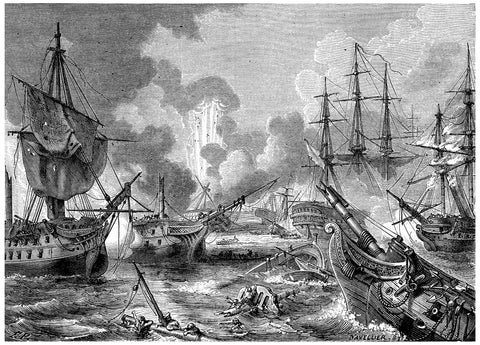
Naval Battles: Ships and Sea Engagements
Naval warfare played a pivotal role in medieval conflicts, notably during the Crusades and Hundred Years' War. Engagements often featured intense close combat, boarding maneuvers, and the deployment of formidable weapons such as catapults and trebuchets. Even more so than land battles, the outcome of naval battles was significantly influenced by prevailing weather conditions and sea dynamics.
In the medieval world, if you fight on a boat on water, then the battle became a naval battle. Doesn't matter if it was a few dudes in canoes or massive galleons and triremes. Boats = naval battle. And in the modern world, planes = aerial battle. And in the future world, spaceship = space battles.
Basically... if you take most of these types of battles and put the combatants in a vehicle and not on land, then it is some form of naval battle. So if it's two dudes sword fighting in canoes... then it's a naval battle duel. And if a bunch of row boats are tying to assault a galleon, then it's a naval battle siege. And if two huge fleets are meeting in the open sea, then its a naval pitched battle.
Conclusion: How to Use These DnD Battles in Gameplay?
Ok... so if you made it this far into the blog post, hopefully you got a nugget of wisdom that will spark new combat encounter ideas from all these types of battles!
But I would not be surprised if you thought: "This is so historical... it didn't give me any new combat encounter ideas at all!"
No worries... I totally get it. If that is the case for you, just do this:
- Look at all the combat encounters you have run in the past few sessions.
- Find the one or two types of battles you run all the time and look at the rest of the list.
- Pick a kind of battle your players haven't played yet
- OR one you think your players would find fun
- AND/OR one that would work for your campaign.
If you follow this, I guarantee your next combat encounter will feel and play so much different than the same old same old!
If you want your players to LEAD NPCs in larger 5e battles, use this link to go to our "Warbands" battle rules. They are perfect for Dragonlance!
Riley Rath

Riley is a freelance copywriter, content writer, and marketer based out of Spokane, WA. He is thankful to have the opportunity to combine his passion for imaginative role-playing to help FLGS, tabletop, board game, and D&D related businesses communicate their distinct value to players everywhere. When not playing or writing about board games or DnD, he is busy hiking, cooking, and gardening... very hobbit-like for a 6'4" dude.
Experiencing Board Game Marketing Difficulties? I can Help, Just Follow This Link!

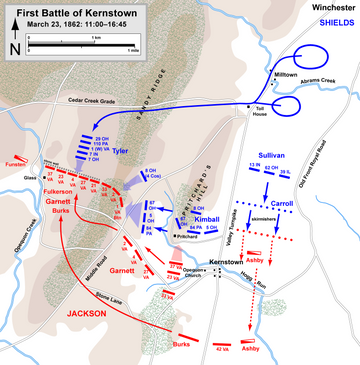
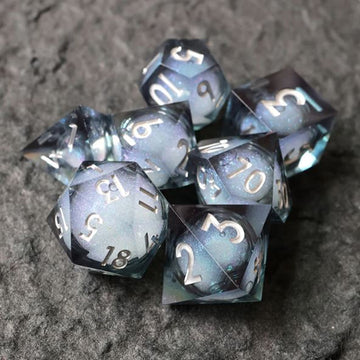

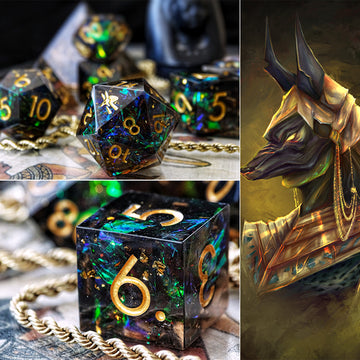
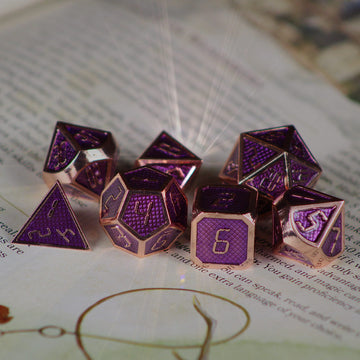
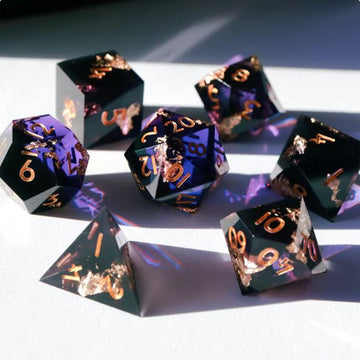
1 comment